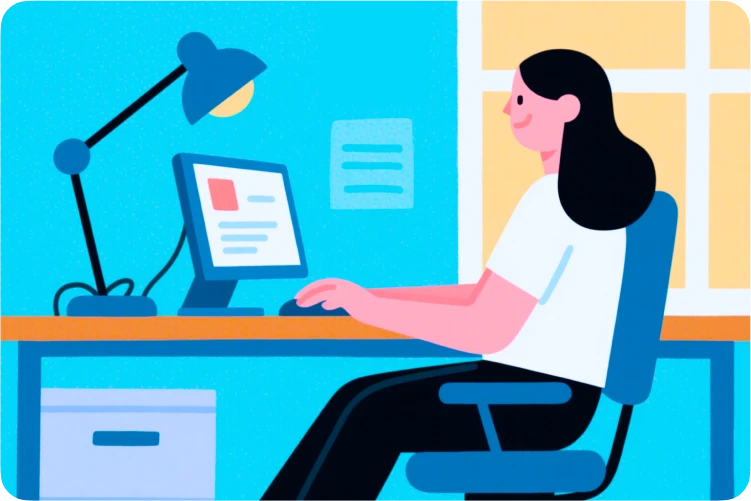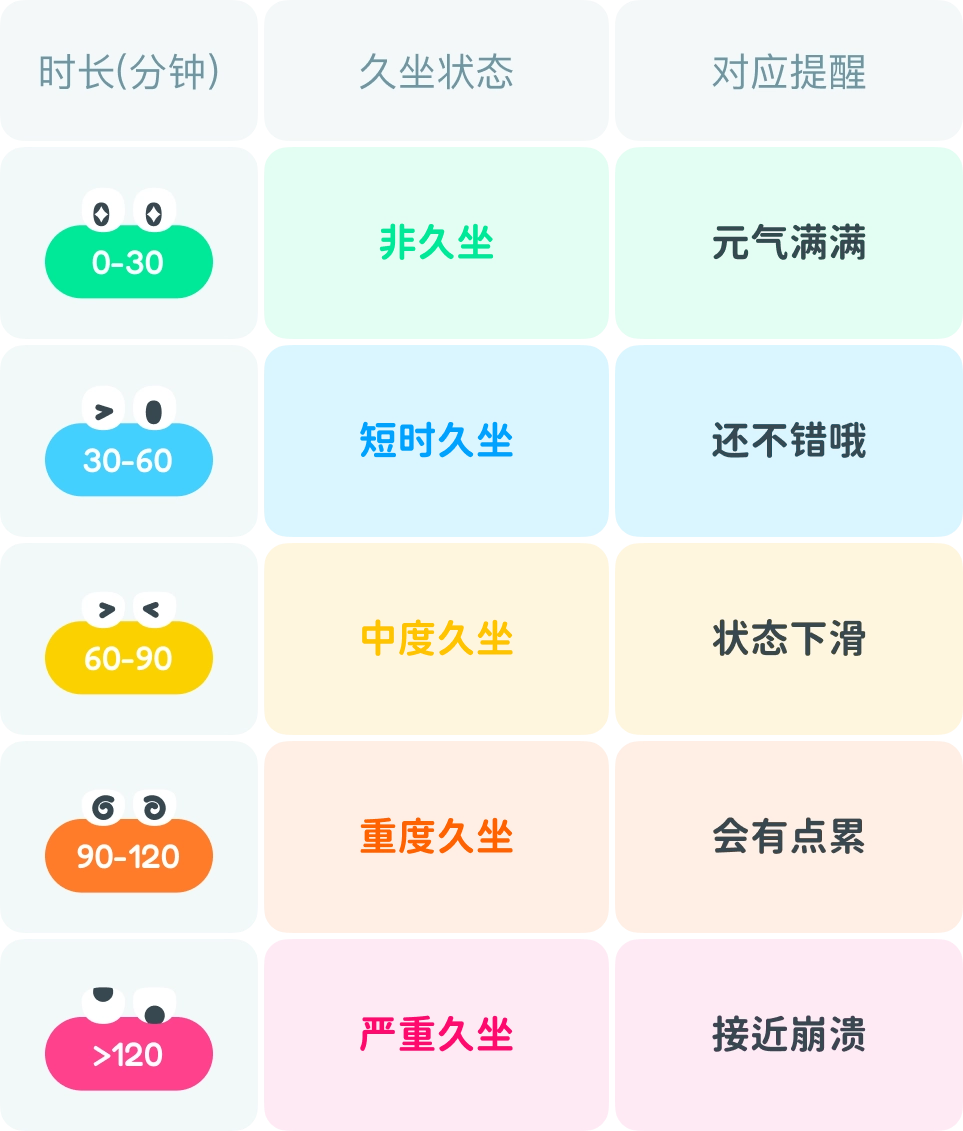Relaxo如何帮助你减少久坐伤害?

Relaxo是如何记录和重置久坐时间的?
Relaxo通过Apple Watch采集的数据,当系统检测到你的 身体能耗 ≤ 1.5 METs时 ,就会开始计时。当久坐时间接近 60、90 或 120 分钟(可自定义提醒间隔)时,Relaxo会持续发送起身活动的提醒通知。
一旦你开始散步、跑步或骑行等任意活动时,且 身体能耗 >1.5 METs时 ,Relaxo会自动记录活动时长。只要满足重置条件,久坐计时就会立即重置。
此外,Relaxo还提供肩颈、腰背、四肢等部位的放松动作库,你完成任意放松训练,同样能重置久坐计时。
Relaxo判断久坐的依据是什么?
久坐的科学定义与健康边界
根据世界卫生组织(WHO)、昆士兰大学及 Canadian Science Publishing 等权威机构的共识,久坐行为被定义为:在清醒状态下,以坐、靠、躺姿势进行,且能量消耗低于 1.5 METs(代谢当量)的任何活动。这涵盖了现代人看电视、办公、通勤等绝大多数日常场景。
研究显示,久坐对健康的影响随时间呈阶梯式恶化。为了对抗这一风险,Relaxo 基于 WHO(世界卫生组织) 及剑桥大学临床医学院的调研数据,将久坐分成了不同的风险等级。
久坐状态5个等级划分
我们发现,身体对静止的耐受是有极限的。随着久坐时间延长,人体会依次经历 肌肉骨骼疲劳 -> 代谢酶活性抑制 -> 心血管风险激增 等不同生理阶段。 据此,Relaxo 将连续坐姿时长量化为 5 个久坐状态。我们的逻辑很简单:一旦超过身体的“安全时长”,健康风险将直线上升。因此,我们建议每 30-60 分钟起身活动 3-5 分钟,以打断这一风险进程,重启身体活力。

温馨提示:
有时候 Apple Watch 可能没能准确记录你的站立动作——比如手腕动作太小、佩戴位置不合适,或者传感器没捕捉到。这时,久坐计时可能不会自动重置。Relaxo 建议你主动通过走动、伸展或完成放松动作来打断久坐哦。 为什么Apple Watch的站立分钟数记录的不准确?
参考文献
Bull, F. C., Al-Ansari, S. S., Biddle, S., Borodulin, K., Buman, M. P., Cardon, G., Carty, C., Chaput, J. P., Chastin, S., Chou, R., Dempsey, P. C., DiPietro, L., Ekelund, U., Firth, J., Haskell, W. L., Haug, E., Lambert, E. V., Leitzmann, M., Loyen, A., … Willumsen, J. F. (2020). World Health Organization 2020 guidelines on physical activity and sedentary behaviour [世界卫生组织2020年身体活动和久坐行为指南] - World Health Organization
Baker, R., Coenen, P., Howie, E., Williamson, A., & Straker, L. (2018). The short term musculoskeletal and cognitive effects of prolonged sitting during office computer work [办公室电脑工作期间长时间久坐的短期肌肉骨骼和认知影响]. International Journal of Environmental Research and Public Health, 15(8), 1678. doi: 10.3390/ijerph15081678.
Benatti, F. B., & Ried-Larsen, M. (2015). The effects of breaking up prolonged sitting time: A review of experimental studies [打破长时间久坐的效果:实验研究综述]. Medicine & Science in Sports & Exercise, 47(10), 2053–2061. doi: 10.1249/MSS.0000000000000654.
Hamilton, M. T., Hamilton, D. G., & Zderic, M. M. (2007). "Role of low energy expenditure and sitting in obesity, metabolic syndrome, type 2 diabetes, and cardiovascular disease." Diabetes, 56(11), 2655-2667.
GBD 2019 Risk Factors Collaborators. (2020). Global burden of 87 risk factors in 204 countries and territories, 1990–2019: a systematic analysis for the Global Burden of Disease Study 2019 [1990-2019年204个国家和地区的87个风险因素的全球负担:2019年全球疾病负担研究的系统性分析]. The Lancet, 396(10258), 1223–1249. doi: 10.1016/S0140-6736(20)30752-2.
Patterson, R., McNamara, E., Tainio, M., de Sá, T. H., Smith, A. D., Sharp, S. J., Edwards, P., Woodcock, J., Brage, S., & Wijndaele, K. (2018). Sedentary behaviour and risk of all-cause, cardiovascular and cancer mortality, and incident type 2 diabetes: a systematic review and dose response meta-analysis [久坐行为与全因、心血管和癌症死亡率风险,以及2型糖尿病发病率:系统性回顾和剂量反应分析]. European Journal of Epidemiology, 33(9), 811–829. doi: 10.1007/s10654-018-0380-1.